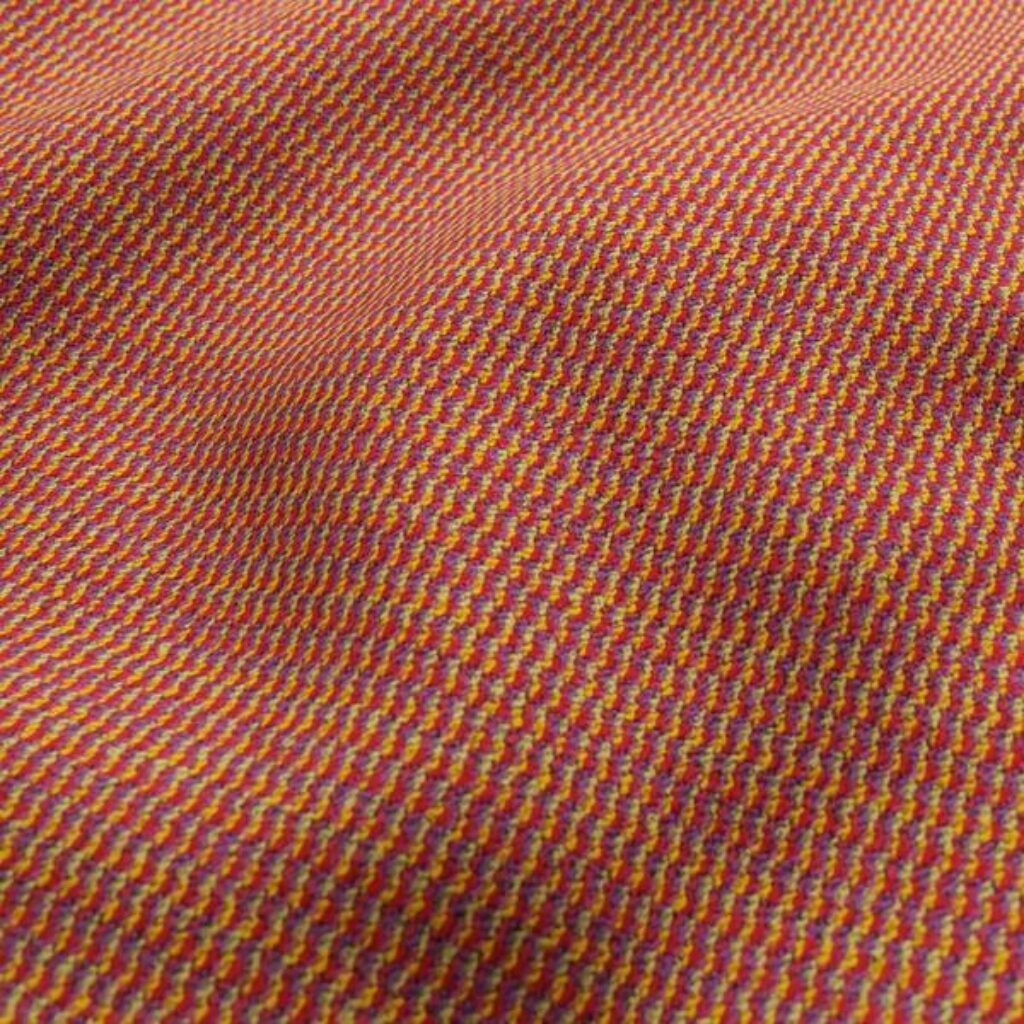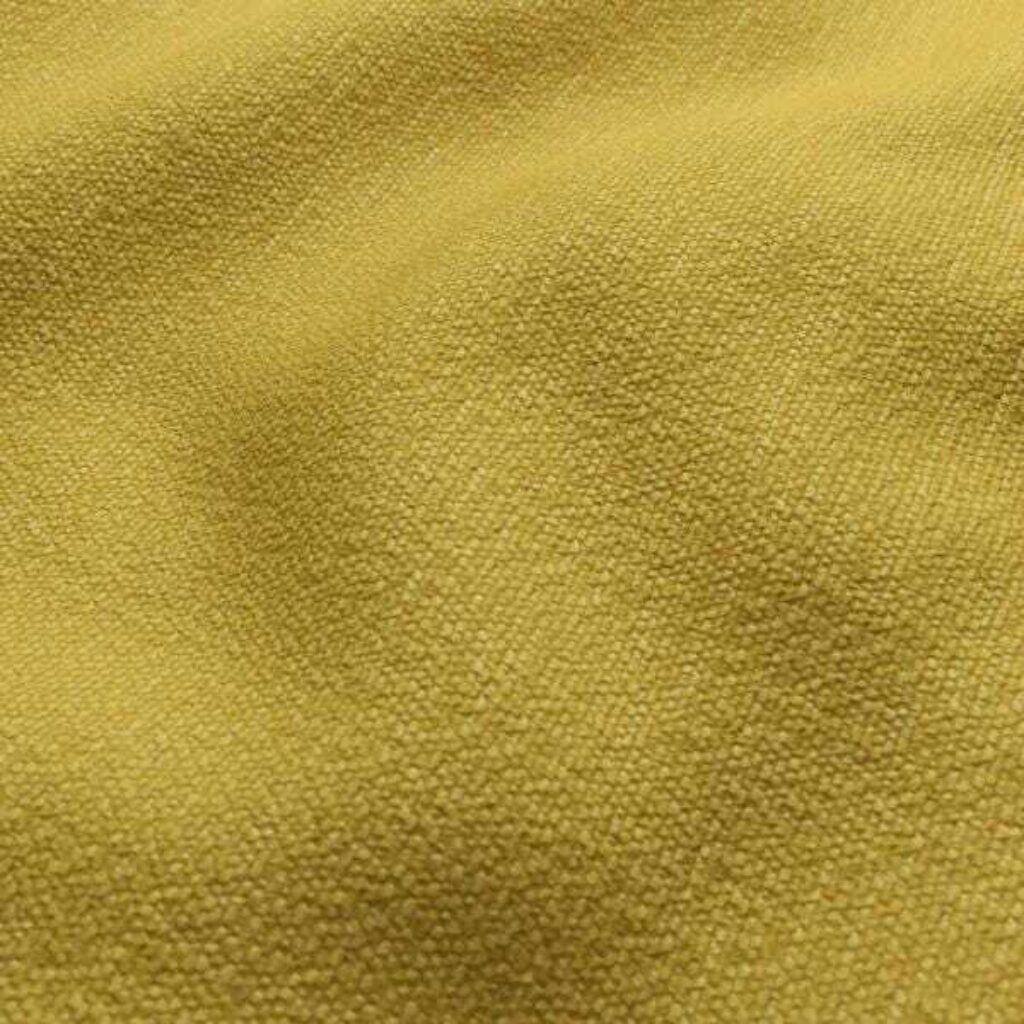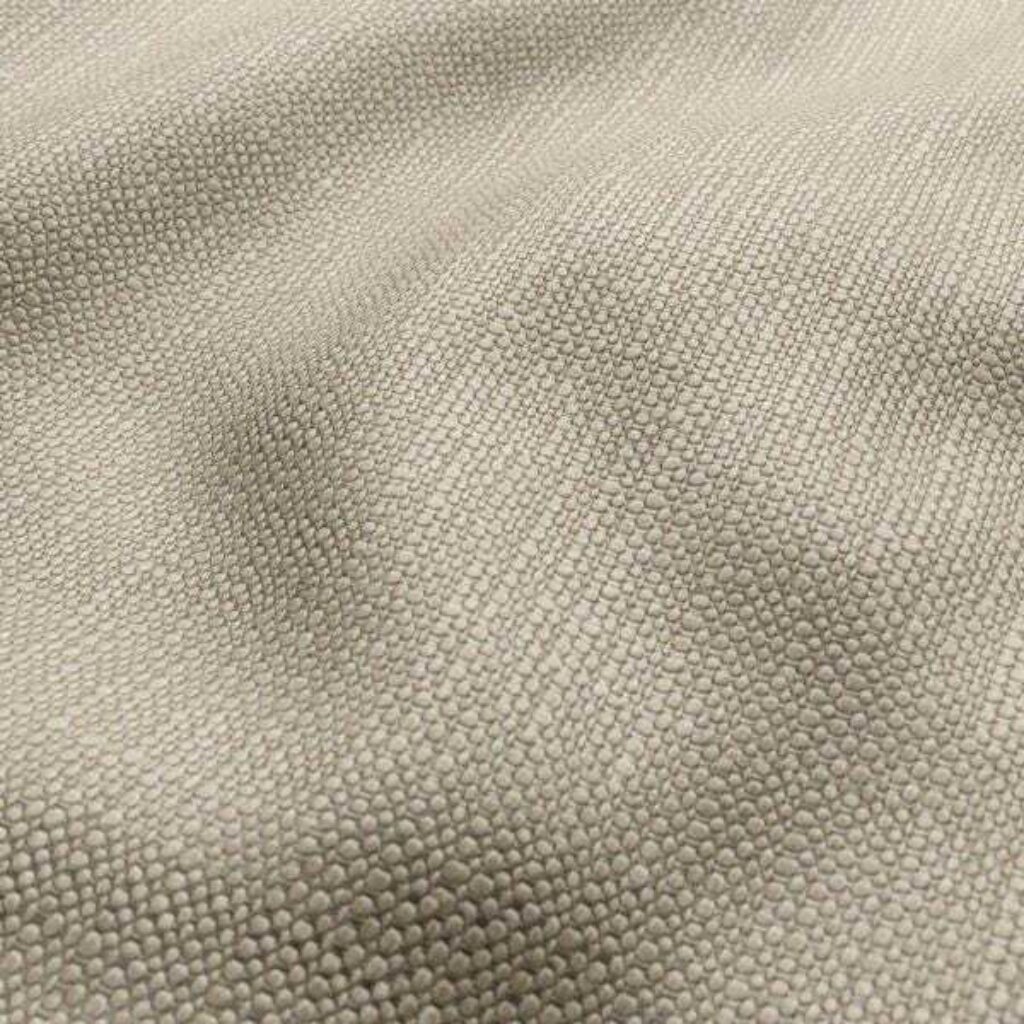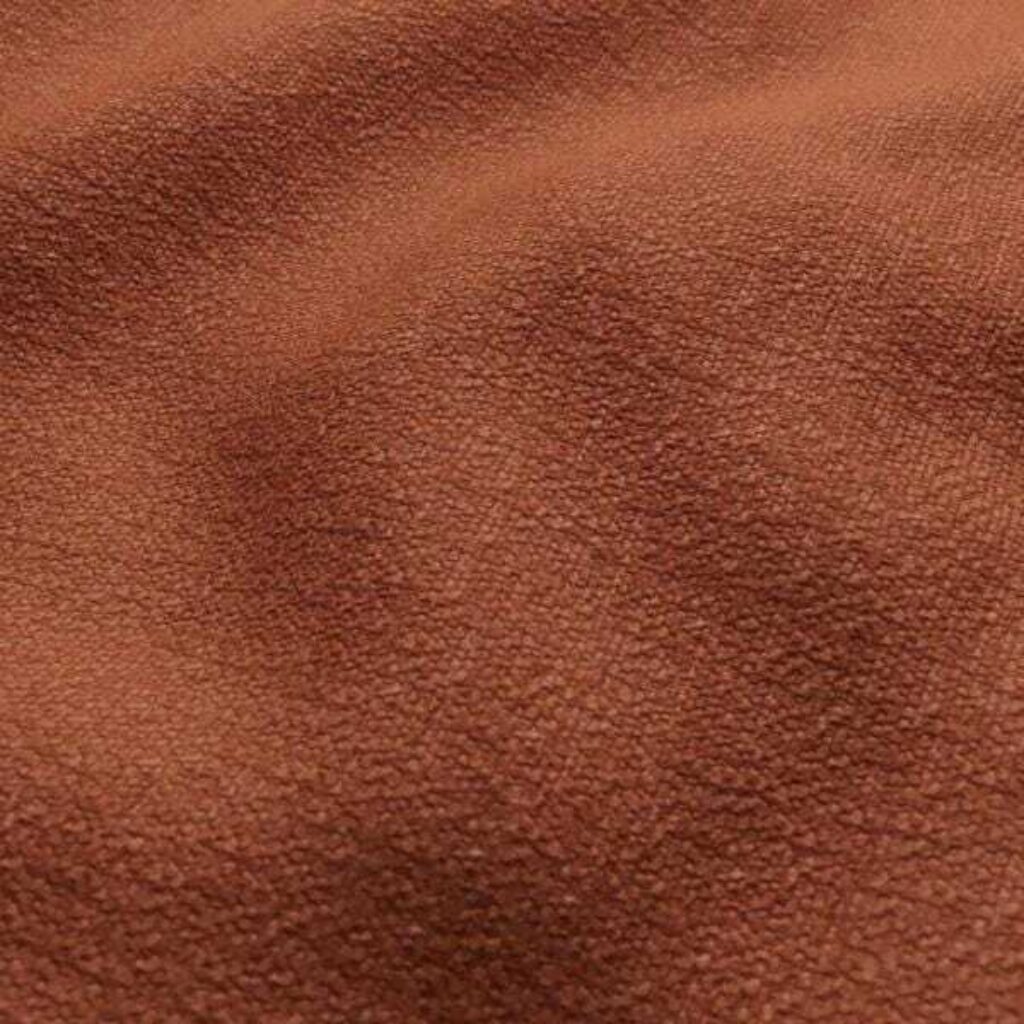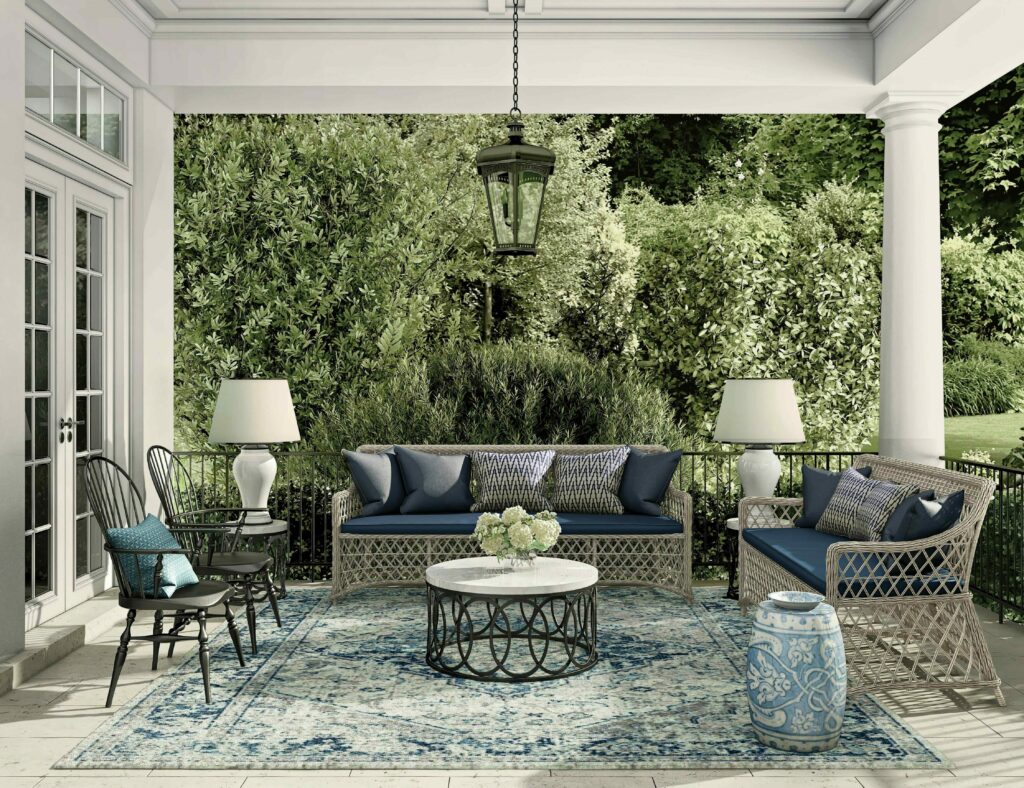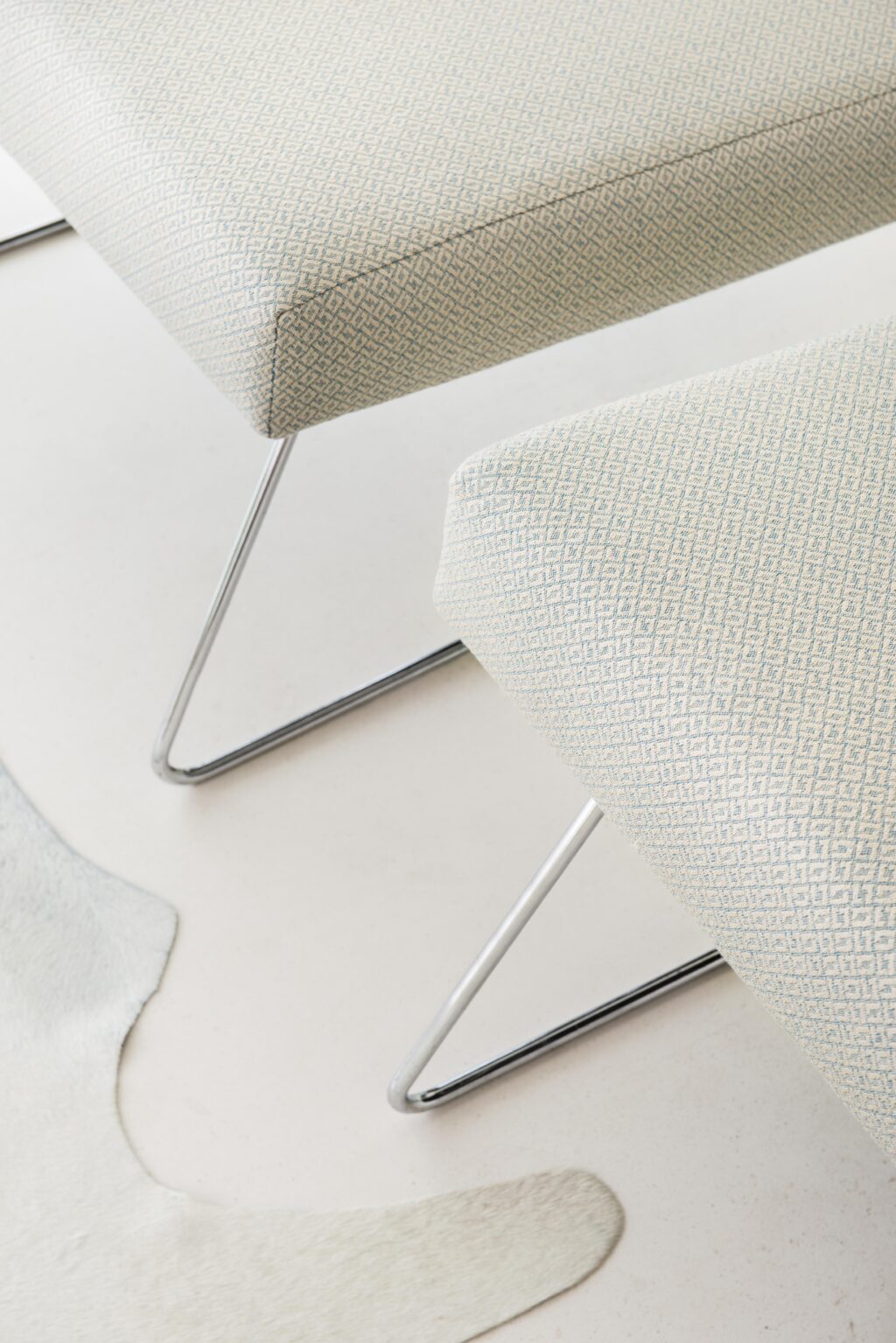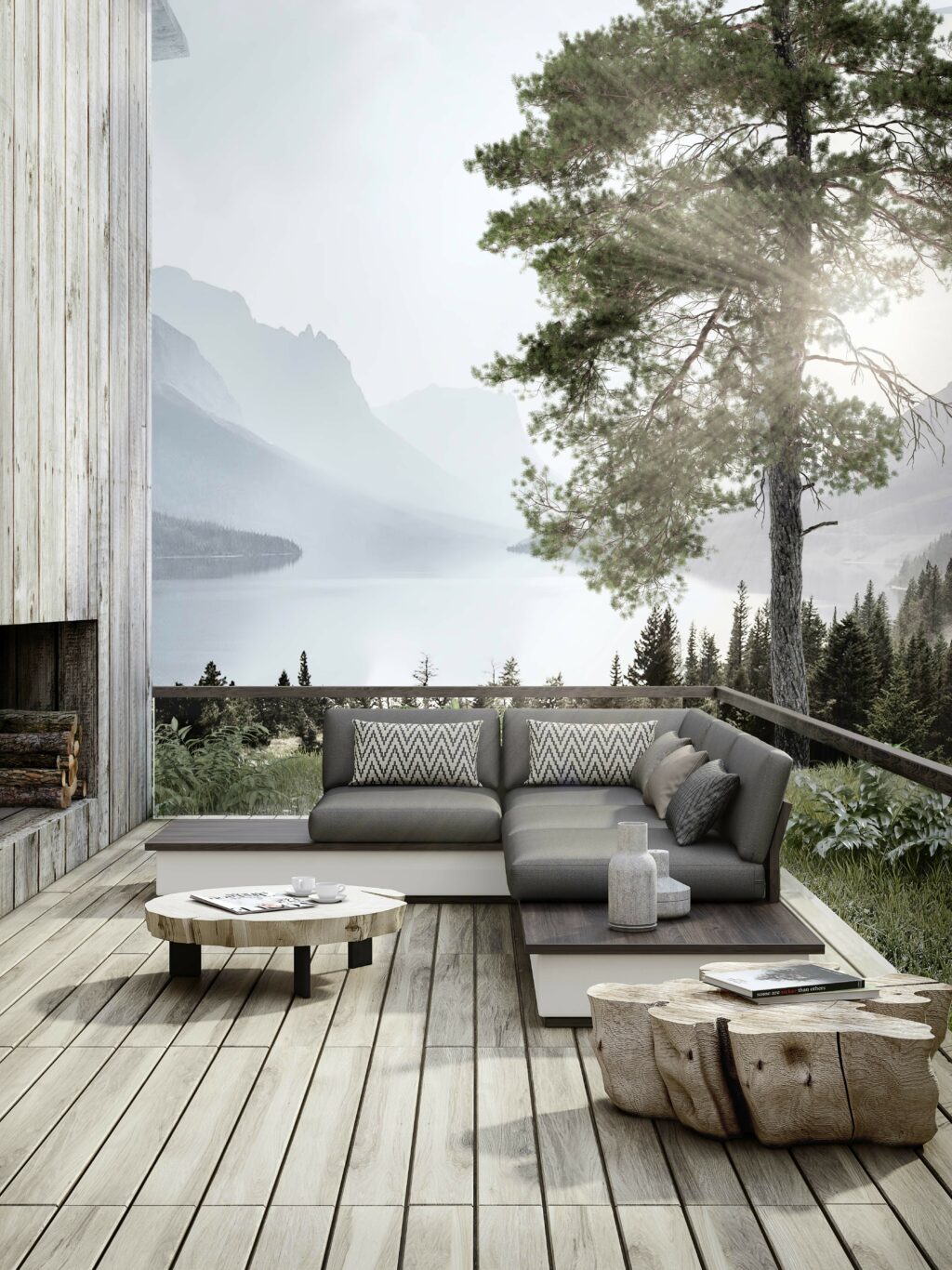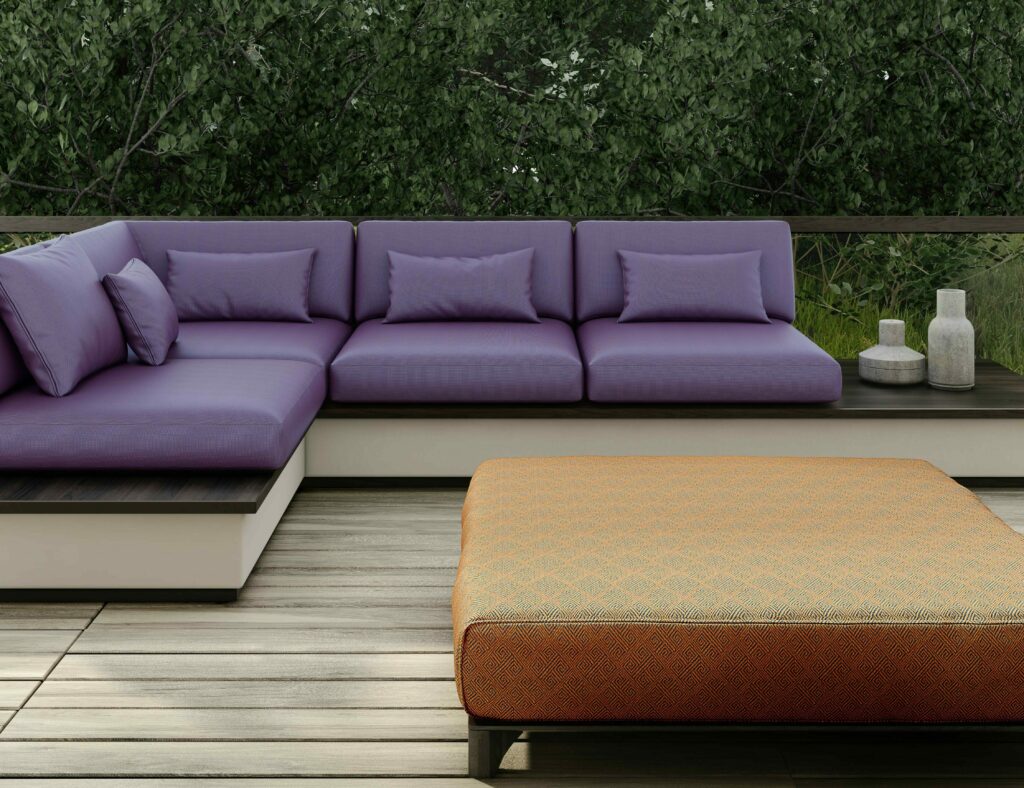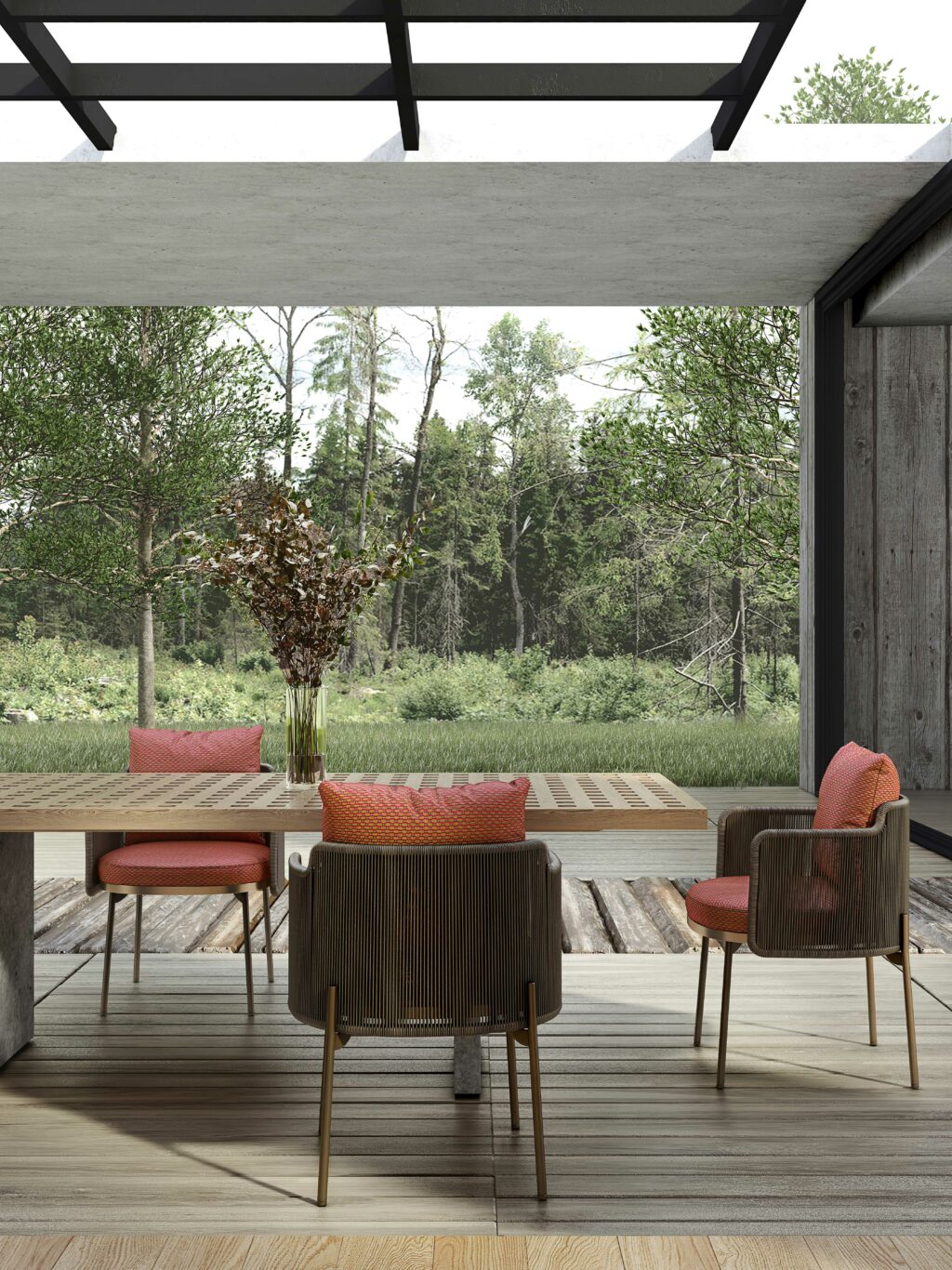FibreGuard Outdoor fabrics: a smart choice for areas exposed to the elements
FibreGuard Outdoor fabrics incorporate the original FibreGuard fabric stain free technology with a few added extras, including solution-dyed polyolefin yarn, especially for outdoor use.
Optimal fade protection
FibreGuard Outdoor's solution-dyed fabrics last years without losing their unique properties, like colourfastness, durability, water and stain repellency.
On top of standing up to UV rays, our FibreGuard Outdoor range is easy to clean, water-repellent and resistant to mildew and odours. FibreGuard Outdoor fabrics undergo rigorous laboratory testing to ensure the most robust colourfast to light-resistant results.
Durable fabrics, whatever the weather
Strong design and construction help our Outdoor fabrics take exposure to the sun’s harmful rays in their stride.
Ready even for the most humid environments
FibreGuard Outdoor’s anti-microbial and anti-bacterial attributes combat the growth of mould and mildew, as well as the spread of bacteria and germs.
Additionally, our fabrics will resist bad odours, commonly found in environments that are more humid.
FibreGuard Outdoor fabrics are durable and soft to touch: the perfect solution for outdoor furniture and decorative accessories. Taking your indoor style outdoors has never been easier.
Are FibreGuard Outdoor fabrics still stain-resistant?
FibreGuard’s easy-clean properties are embedded in the manufacturing process, even with our Outdoor fabrics too.
No after-treatment is necessary.
This takes the extra work (and worry!) out of your hands so you can get on with living.
Stains on FibreGuard Outdoor fabrics are removable, and dirt is easily cleanable resulting in your outdoor fabrics maintaining their fresh, new look.
Are FibreGuard Outdoor fabrics still eco-friendly?
All FibreGuard fabrics are OEKO-TEX® STANDARD 100 certified. This guarantees that FibreGuard Outdoor fabrics won’t release any harmful finishes or chemicals into the environment and are safe to use by humans and pets.
Are FibreGuard Outdoor fabrics resistant to sunscreen and sun oils?
Both sunscreens and oils can be easily cleaned in exactly the same four steps as you would use to clean all FibreGuard fabrics.
Our fabrics remain easy to clean, wash after wash, stain after stain, with no topical spray treatment needed.
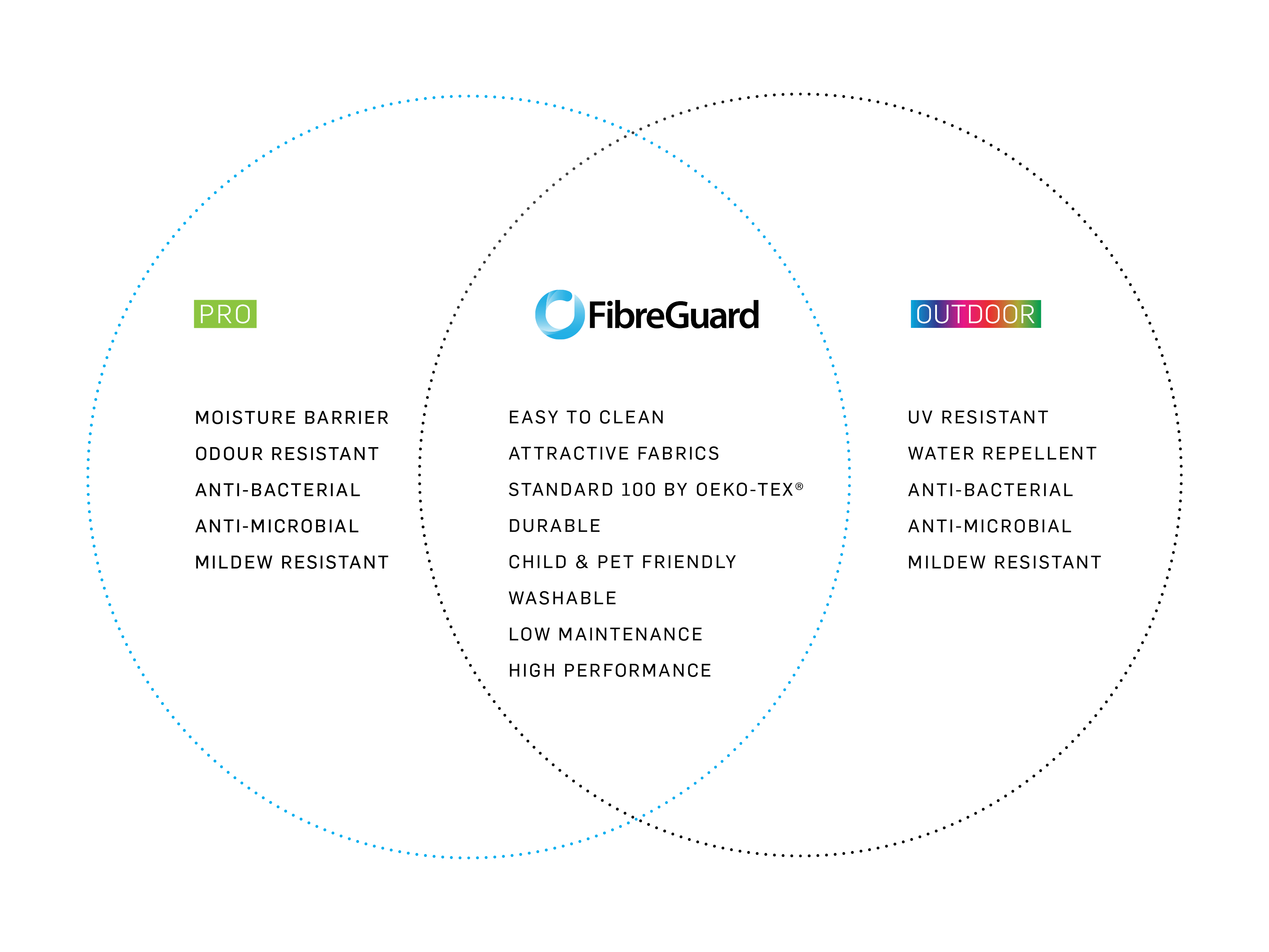
Outdoor Furnishing Fabrics FAQ
Outdoor fabrics have special features that make them different from other materials, and they are perfect for designers who want to create beautiful and practical outdoor spaces.
These fabrics are made to handle all kinds of weather, like sun, rain, and changing temperatures. Outdoor fabrics need to be strong and easy to take care of, all while resisting different weather conditions: no small feat!
Outdoor fabrics are typically made from polyester or polyolefin and have a durable, water-resistant coating. They’re also treated so they can withstand UV rays for long periods of time without fading or becoming brittle. Because of this, outdoor furniture is often made with these materials as well.
Let's look at our own range of outdoor fabrics and what makes them particularly special.
If you want your outdoor furniture and other items to remain safe in the rain, it is important that you understand the difference between water-resistant and waterproof fabrics.
Outdoor fabrics are waterproof, which means they are designed to prevent water from passing through the material. Waterproof items completely block the penetration of water through their fabric or material. Water-resistant fabric or material has a medium protection level, meaning that it will not completely repel water but is woven to deter it. Read more: Water repellent, water resistant and waterproof textiles: the facts
Outdoor fabrics don't have to be 100% waterproof since they're not exposed to rain or snow all year round. However, they do need to be able to resist moisture in the air and stay strong despite repeated exposure to UV rays from sunlight.
Waterproof fabrics vs water resistant fabrics: what's the difference?
What does 'water repellant' mean?
Water repellent fabrics are basically "hydrophobic" - which literally means they're afraid of water!
Instead of soaking into the fabric or the foam underneath, liquids just get pushed away from the surface. When you spill something on these fabrics, the liquid forms little beads that you can easily wipe off.
Dampness combined with sunlight provides mould and mildew the perfect environment to grow. This is because wet materials rot, and sunlight provides the necessary UV fuel for mould spores to thrive.
FibreGuard Outdoor fabrics are specifically designed with anti-microbial and anti-bacterial properties to combat the growth of mould and mildew, as well as resist unpleasant odours often associated with humid environments. The anti-microbial properties of FibreGuard fabrics are rigorously tested according to these standards:
- ASTM E2149 (2013) – to prove significant reduction of bacteria growth, the result must be a reduction of at least 90%.
- ISO 20743 8.2 (2013) – to prove significant reduction of bacteria growth, the result must be higher than 2, ideally 3
How do I know if an outdoor fabric is mildew-resistant or mould-resistant?
A handy guide to outdoor fabric maintenance
Furniture placement
The first thing you should do is ensure that the fabric or cushioning on your furniture is suitable for outdoor use. It's also important to be careful about where you position your furniture: avoid placing it directly next to trees or bushes where leaves can fall on it.
Spot cleaning
Ensure that your furniture gets spot cleaned regularly so that mould doesn't have time to form on its surface. When dirt and grime build up on your outdoor textiles, they become less effective at protecting you from UV rays or other elements of nature.
How Fabrics are Protected Against Fading
Treatments used on outdoor textiles are specifically designed to block or reflect UV rays. Colours in fabrics must be able to withstand various types of wear and exposure, including:
- Rubbing (from general wear and tear)
- Washing
- Ironing
- Light exposure
FibreGuard ColourFastness Tests
Textiles testing is a crucial part of our production process, to ensure the durability and vibrancy of our fabrics’ colours. These tests include:
- Colour fastness to rubbing (standard: ISO 105-X12)
- Colour fastness to light (CFL) (standard ISO 105-B02)
- Colour fastness to water (standard ISO 105-E01)
- Colour fastness to washing (standard ISO 105-C0)
- Colour fastness to dry cleaning (standard ISO 105-D01)
What makes some outdoor fabrics 'fade resistant'?
Where to buy FibreGuard Outdoor fabrics
FibreGuard fabrics are available globally through a network of distributors, retailers, and furniture manufacturers.
Many online and offline furniture shops, carry pieces (like sofas, chairs, and headboards) that are already upholstered with FibreGuard fabrics. You can choose FibreGuard as a fabric option when ordering custom-made furniture from manufacturers.
Through Fabric Distributors and Wholesalers:
FibreGuard is distributed by major fabric companies worldwide such as Fabric Library, James Dunlop Textiles, Home Fabrics, Zepel Fabrics, Accordo Fabrics, Stuart Graham Fabrics, The Andari Group, Zu Design, Acacia Fabrics.
These companies supply the fabric to interior designers, upholsterers, and retail fabric stores.
Online fabric retailers also stock FibreGuard collections: search for "FibreGuard" plus the name of your local, high-end fabric retailer or furniture store.
For Sampling and Design:
Check out the TwinBru textures website, where you can browse and download digital 3D fabric textures and order free fabric samples before making a purchase decision through a reseller. Click here to view the full FibreGuard fabrics collection.



